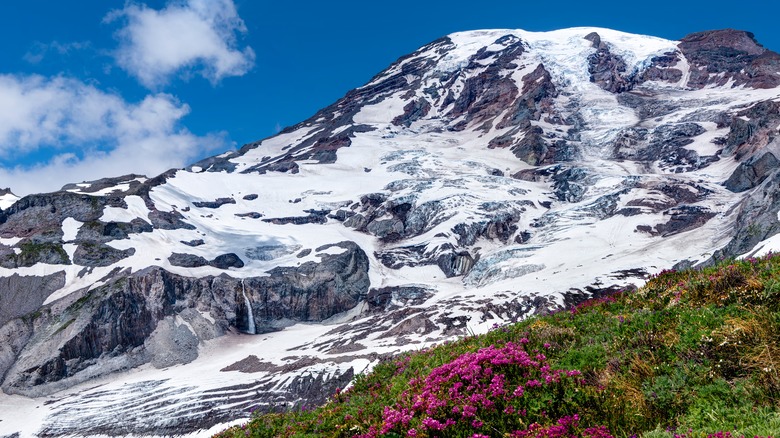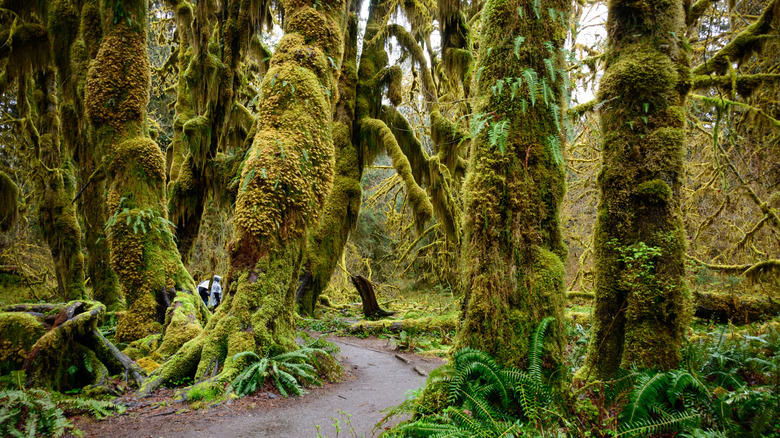Olympic, Mount Rainier, and North Cascades
Olympic National Park covers almost a million acres, and since it stretches along Washington’s coast for more than 70 miles, it offers the chance to see impressive sea stacks and explore tidepools rich in marine life. One spot for that is the trail along Rialto Beach to the Hole-in-the-Wall rock faces. Further inland, at Lake Crescent and Lake Quinault, you can rent canoes and kayaks to explore both of these glacially carved lakes.
Walking among the moss, ferns, and towering trees of the Hoh Rain Forest or one of Olympic’s other three rainforests is a must. In the Elwha Valley, the old resort at Olympic Hot Springs has long since given way to unmaintained pools. However, from spring to autumn, the relaxing Sol Duc Hot Springs Resort and its cabins are still a good place to not just rest your weary bones, but also soak them in mineral water.
At Mount Rainier National Park, you can drive the Chinook Scenic Byway, ride the Mt. Rainier Scenic Railroad, hike up to the Mount Fremont fire lookout, survey the Boulder Cave Natural Area, or rediscover history at the Pioneer Farm Museum and Ohop Indian Village. North Cascades has camping, boating, and horseback riding options, and despite its name, Cutthroat Lake is one of several options for hiking with kids if you’re road-tripping with family. However, those traveling alone or with other adults who plan on roughing it should be careful not to charge heedlessly into adventure in Mount Rainier or North Cascades.
Safety in Washington’s national parks

One thing to remember about Mount Rainier, is that it’s an active volcano. While it hasn’t had a major eruption in 500 years, the U.S. Geological Survey (USGS) is still monitoring it. It’s been pegged as the most dangerous U.S. volcano (via National Geographic), and as reported by Time, it’s one of the world’s most dangerous volcanoes overall, according to experts. According to the USGS, what makes it potentially perilous more so than lava is the flow of mud and debris that would be triggered by the melting of glaciers on top of the mountain during an eruption.
This isn’t meant to discourage anyone from visiting Mount Rainier National Park, but it’s worth noting in general that it’s a place where you should exercise caution. In addition to common-sense hiking safety tips everyone should know, the U.S. National Park Service recommends that hikers take special care not to enter Rainier’s collapsible ice caves or be overconfident when crossing streams or hiking in springtime.
North Cascades also comes with a warning: It’s the place with the highest death rate in the U.S. national park system (via NBC News). The mountains here are what’s really cutthroat, not so much the lake of that name. Some cite the ban on bolted anchors as a contributing factor in mountaineering accidents in North Cascades. Even experienced climbers have fallen victim to such accidents. It all goes to say, as you’re enjoying the remote, rugged beauty and wilderness of each of Washington’s three national parks, the same safety tips apply.

